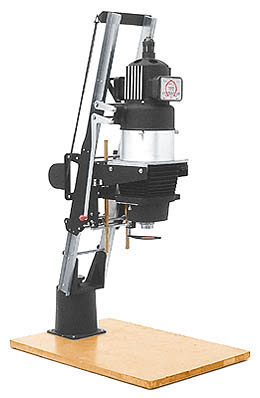|
The Omega D-II is one of the most significant enlargers in Omega's
history. Introduced shortly before World War II, it was a complete
departure from the original Model D enlarger, but was similar in design to
the C-II which had been brought out the previous year. With its
dual-rail, inclined column it is most certainly the forefather of today's
D5, and the resemblance is easy to see when the two are compared. Such is
the similarity that negative carriers made 70 years later for the D-5 can still be
used with the DII.
World War II
ensured the popularity of the D-II, as it became the enlarger of choice
for the U.S. military. While many companies had to adapt to produce other
products in support of the war effort, Simmon Bros. were able to
concentrate on their core business - enlargers. Thousands of servicemen
were trained in darkroom work using the D-II. When returned to civilian
life, it was natural for them to purchase the same enlarger.
However, the D-II
has also caused some confusion, since, for the latter part of its
production run, it was referred to by Omega as the D-2, the same name they
applied to its updated replacement. (For the sake of clarity, we always
refer to the earlier enlarger as the "D-II.") It's easy to distinguish
from the later model by its "lift and lock" elevation system, tall base
casting with the chassis rails extending only to the top of the casting,
the cast column cross braces, and the counter balance spring assemblies
mounted on the back of the carriage.
Since it predates
both the variable condenser lamphouse and dichroic colorheads, the DII was
never sold with either. Early D-II enlargers had steel chassis rails,
making them much heavier than later production with aluminum rails.
Used Advice: Despite
it's age, the D-II is still pretty much fully serviceable. However, the
improvements introduced in the D-2 make it a far better choice.
Prospective buyers of D-IIs should note whether the enlarger comes with
condenser sets and lens mounts required for the film formats they intend
to print. |


